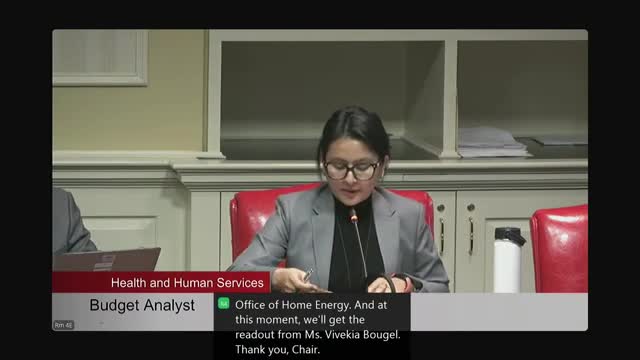Maryland increases energy assistance budget by $56M amid rising application demand
March 01, 2025 | Health and Human Services (HHS) Subcommittee, Budget and Taxation Committee, SENATE, SENATE, Committees, Legislative, Maryland
Thanks to Scribe from Workplace AI , all articles about Maryland are free for you to enjoy throughout 2025!

This article was created by AI using a video recording of the meeting. It summarizes the key points discussed, but for full details and context, please refer to the video of the full meeting. Link to Full Meeting
During the session, it was revealed that the average energy burden for households receiving assistance was 9.1%, with high-energy burden households facing an even steeper average of 13.6%. The OHEP benefits were shown to effectively reduce these burdens by 28.8% for all households and 25.8% for those with high energy needs. However, concerns were raised regarding the Benefit Targeting Index, which decreased to 88, indicating that households with the highest energy burdens received 12% less benefit compared to the average household.
The committee also discussed the dramatic increase in energy assistance applications, which surged by 61.1% in fiscal year 2024, largely due to legislative changes that expanded eligibility criteria. Despite the increase in applications, the number of households receiving benefits did not rise proportionately, with only EUSP recipients seeing a 22.1% increase. The Department of Human Services (DHS) acknowledged challenges in processing these applications, leading to delays and a temporary halt in benefits for certain programs.
DHS officials highlighted ongoing efforts to improve program operations, including technology upgrades and enhanced communication with local agencies. They reported that approval rates for applications have improved significantly in 2025, with 74% of applications being approved compared to less than 40% in the previous year.
The meeting concluded with a commitment from DHS to continue monitoring application trends and expenditures, with plans to utilize any remaining funds for supplemental benefits if available at the end of the fiscal year. The committee's recommendations included requests for further data on energy assistance participation rates and application processing times to ensure that vulnerable populations receive the support they need.
Converted from HHS Committee Session, 2/27/2025 #1 meeting on March 01, 2025
Link to Full Meeting
Comments
View full meeting
This article is based on a recent meeting—watch the full video and explore the complete transcript for deeper insights into the discussion.
View full meeting